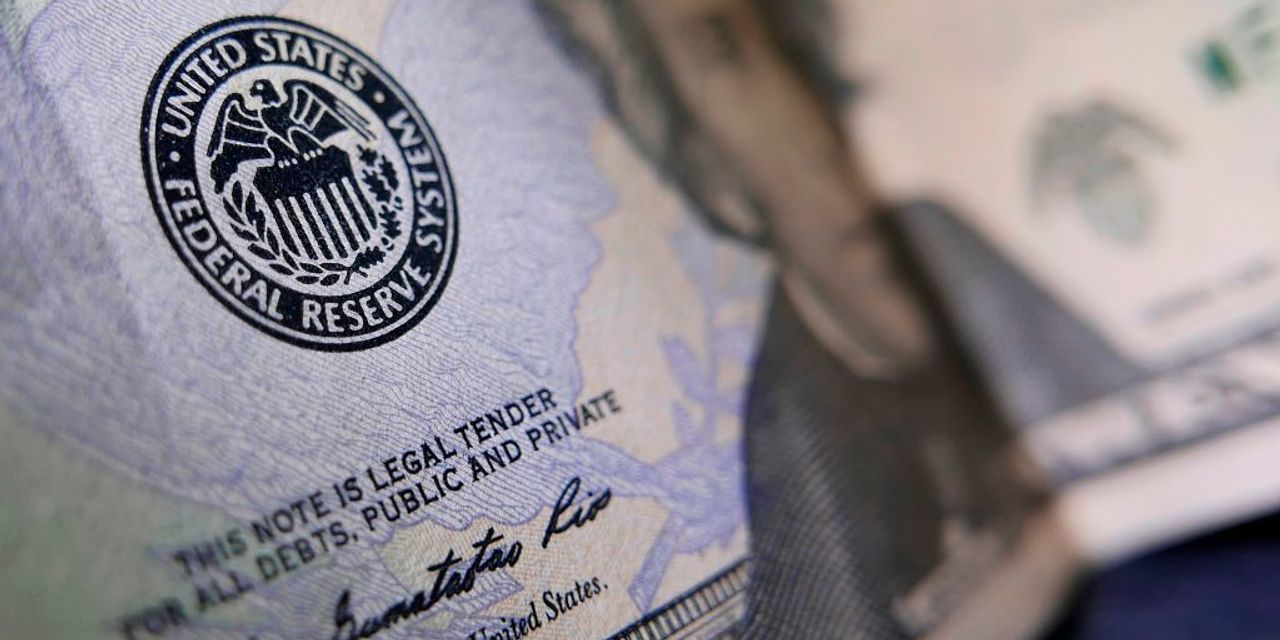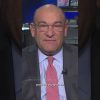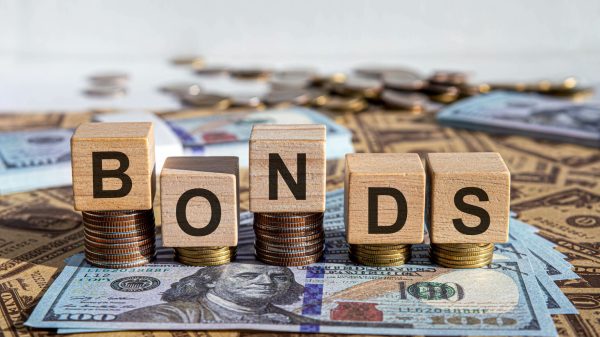The end is in sight for the Federal Reserve’s most aggressive interest-rate raising campaign in a generation.
That’s according to economists at Goldman Sachs led by David Mericle and Jan Hatzius. They see the Fed holding steady after last month’s quarter-point hike until the second quarter of next year, when they predict the cycle will start to reverse with the first quarter-point cut.
That’s got to sound like good news for stocks. Though, to be fair, that view is pretty much in line with what markets are already pricing in. It’s also worth noting that Goldman has had a pretty good record in predicting the economic outlook so far.
When the market was predicting a lower peak for Fed rates, Goldman disagreed, saying they would go higher. When the Fed was arguing that a recession was more likely than not, Goldman begged to differ—saying it was possible but not the base case. As of the July 25 rate decision, the Fed is no longer predicting a recession. The soft landing, it turns out, is no fairy tale.
The minutes of the Fed’s meeting are out this week and will provide more color on what policy makers think will happen next. And earnings from retailers including Home Depot, Target and Walmart will give a reading on the pulse of the consumer. Overall growth appears to be sluggish, but it could be a lot worse, given interest rates have risen more than 5 percentage points in a little more than a year.
As always, a grain of salt is needed. Goldman is quick to point out there’s a strong chance rates stay higher to make sure inflation remains tame. Another hike is possible. But for now, it looks like everyone is roughly singing from the same hymn sheet.
—Brian Swint
*** Join Barron’s senior managing editor Lauren R. Rublin and deputy editor Ben Levisohn today at noon when they talk with Blair Boyer, co-head of the large-cap growth equity team and a large-cap growth equity portfolio manager at Jennison, on the outlook for growth stocks, financial markets, industry sectors, and individual stocks. Sign up here.
Try your hand at this morning’s Barron’s digital jigsaw, which is based on the week’s cover story. For all games, including the daily crossword and sudoku, click here.
***
The Fed’s Minutes Are Coming. Economists Shift Outlooks.
The Federal Reserve will on Wednesday release the minutes of its July meeting, at which it raised rates by a quarter of a percentage point. Recent economic data, including the consumer price index for last month, have raised expectations it will pause on another rate hike in September.
- With expectations for a pause, and possibly for the Fed to be near the end of its rate increases, worries about a recession are fading. Recession has been the talk since early last year, but perceptions have changed as inflation continues to drift lower.
- There is more talk now about a “soft landing.” But behind the scenes, in some economic circles, there is concern about a “no landing” scenario. That means economic growth is too slow to push inflation back to 2%, necessitating more Fed rate hikes, MarketWatch reported.
- Ray Fair, a Yale economics professor, told MarketWatch that the Fed successfully cutting consumer-price inflation to near 2% will be what really matters for the 2024 presidential election. If inflation doesn’t go gently, it would likely be negative for President Joe Biden.
- Chris Low, chief economist at FHN Financial, sees rate hikes to 6% by the end of this year. That is an out-of-consensus call. Financial markets think the Fed is done, with its benchmark rate in a range of 5.25% to 5.5%.
What’s Next: Goldman Sachs economists see the Fed starting to lower interest rates in the second quarter 2024 and cut steadily after that by a quarter of a percentage point each quarter, ultimately bringing the rate to 3% to 3.25%.
—Liz Moyer and MarketWatch
***
Retailers Reporting This Week: Home Depot, Target, Walmart
Retail earnings kick off this week, and analysts and investors will be listening to what executives say about consumer spending trends. Economists have warned for some time that a spending slowdown was coming, but that didn’t bear out in the first half of 2023.
-
Home Depot,
which reports Tuesday, is expected to report a drop in same-store sales of 3.9% after falling 4.5% in the first quarter. High mortgage interest rates and a sluggish housing market are discouraging renovations. -
Target,
TJX,
and Walmart report later this week. Investors will be on the lookout for news about inventory shrink—the term retailers use to refer to losses of products including theft, and pressure on profit margins. -
Target
also is expected to report a drop in same-store sales, of 3.3%, after breaking even in the first quarter. Estimated sales of $25.2 billion are expected to be down slightly from last year’s second quarter, according to FactSet. -
Walmart
is expected to report same-store sales rose 4.1%, which is below the 7.3% gain in the first quarter. Wall Street expects revenue of $158.9 billion, 4.6% higher than last year’s second quarter.
What’s Next: Investors will also be listening to what retailers say about the outlook heading into the fall and winter holidays. Already, back-to-school spending is expected to reach a record $41.5 billion, according to the National Retail Federation.
—Sabrina Escobar and Liz Moyer
***
U.S. Steel Rejects Cleveland-Cliffs Bid and Explores Options
United States Steel has rejected a bid from Cleveland-Cliffs and issued a statement Sunday saying it is exploring strategic alternatives after receiving “multiple unsolicited proposals.” The steel company built by Andrew Carnegie and J.P. Morgan might not be independent for much longer.
- The company, which was formed in 1901, said it had received approaches that ranged from the acquisition of certain production assets to consideration for the whole company. That’s according to a news release from CEO David Burritt, who said: “The board is taking a measured approach to considering these proposals.”
- One of the approaches was from Cleveland-Cliffs, which has been rejected. It announced Sunday a proposal to buy U.S. Steel for $17.50 a share and 1.023 shares of Cliffs’ stock. The proposal values U.S. Steel stock at about $35 a share. U.S. Steel shares closed Friday at $22.72 a piece.
- In a statement Cleveland-Cliffs CEO Lourenco Goncalves said he had made a written proposal to acquire U.S. Steel in July. In a separate statement Burritt posted U.S. Steel’s rejection letter, which said: “The board has no choice but to reject your unreasonable proposal.”
What’s Next: Consolidation in the domestic industry could help producers better match supply and demand and achieve higher profit margins. A U.S. Steel-Cliffs combination would create a company with roughly 30 million tons of shippable steel capacity with substantial iron ore and coal assets. That would be the largest in America, according to World Steel Association Data.
—Al Root
***
It’s 13F Filing Day. What Did Big Money Managers Shift?
Big money managers and hedge funds are reporting their quarterly holdings, with investors watching for any big moves in tech. Already, some managers have shifted into
Amazon.com
shares as the e-commerce giant helped lift the broader market.
- The 13F filings represent what the money managers held as of the end of the last quarter, with a 45-day lag until reporting, meaning the positions could have shifted since. But investors like comparing who added or trimmed holdings.
- Seth Klarman’s Baupost Group owned 963,946 Amazon shares on June 30, according to its filing on Friday. Soros Fund Management owned 769,061 Amazon shares at the end of the second quarter.
-
Soros also increased positions in shares of
Rivian Automotive,Rocket Companies,
DoorDash,
and
T-Mobile US.
Jeffrey Smith’s Starboard Value increased positions in
Wix.com
and
Humana. -
Investors will find out about Warren Buffett’s view on
Paramount
when
Berkshire Hathaway
reports on changes in its $350 billion equity portfolio. Berkshire bought about $4.5 billion of shares in the second quarter and sold around $12.5 billion, according to an analysis by Barron’s.
What’s Next: Berkshire’s largest holdings, including
Apple,
American Express,
Coca-Cola,
and
Bank of America
didn’t change in the quarter, Barron’s analysis found. That means sales last quarter were concentrated in its smaller equity investments, which are run by Buffett as well as investment managers Todd Combs and Ted Weschler.
—Andrew Bary and Liz Moyer
***
New Covid-19 Strain Grows as Drugmakers Prepare Fall Shots
A new strain of Covid-19 is increasing the number of infections yet again just as vaccine makers gear up for their fall boosters. The latest strain of the coronavirus, which some are calling Eris, makes up about 17% of U.S. cases, according to the Centers for Disease Control and Prevention.
- The World Health Organization said the new strain has been reported in at least 51 countries. Covid-19 stopped being a federal public health emergency in the U.S. in May.
-
Pfizer, Moderna, and
Novavax
are preparing updated Covid-19 vaccines that target recent strains, though not specifically the newest one.
Pfizer
CEO Albert Bourla said they expect to make their updated Covid-19 vaccine commercially available in September. - But the vaccine makers acknowledge that predicting demand is a challenge. And the formerly lucrative market of selling vaccines and treatment to the government for distribution has ended, making way for commercial distribution though pharmacies and medical providers.
-
Moderna
executives have said they now expect the 2023 market to be between 50 million and 100 million doses, while Pfizer executives said the 12.4 million doses administered so far in the U.S. this year was “behind” their earlier projections.
What’s Next: Optimistic estimates for 2023 vaccine uptake are based on the U.S. market for flu vaccines, usually around 150 million doses a year. More pessimistic estimates assume uptake will be limited. Goldman Sachs estimates just 23.7 million doses will be sold in the U.S. in 2023.
—Josh Nathan-Kazis and Liz Moyer
***
MarketWatch Wants to Hear From you.
The inflation report showed plane tickets have gotten cheaper. Will the cost of flying stay down for long?
A MarketWatch correspondent will answer this question soon. Meanwhile, send any questions you would like answered to [email protected].
***
—Newsletter edited by Liz Moyer, Patrick O’Donnell, Rupert Steiner
Read the full article here









